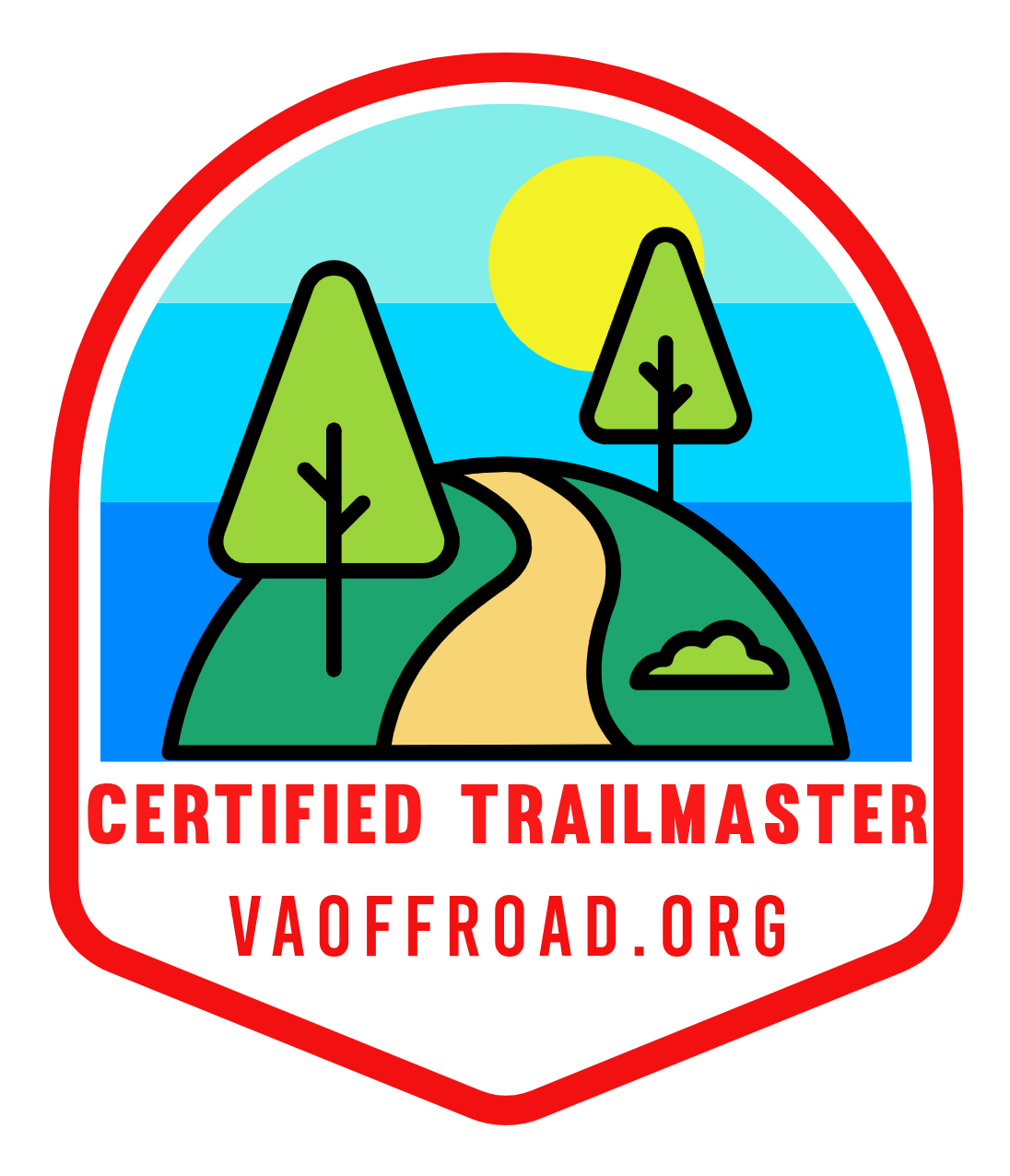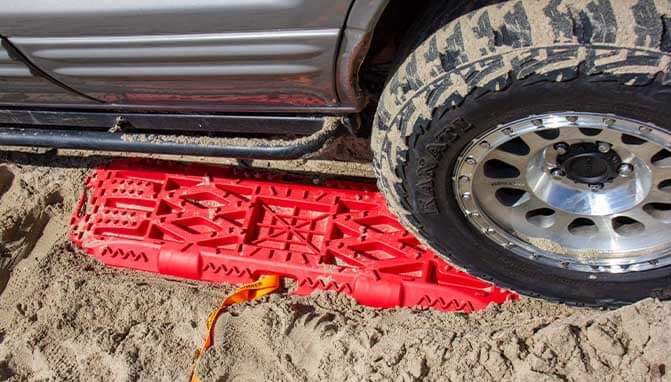
The Core Principles of Responsible Off-Roading
Vehicle Recovery and Legal Trail Use
🌧️ Getting Stuck: Smart Recovery Tactics

Getting stuck in mud, snow, or sand happens even to the most experienced off-roaders. But the difference between damaging your rig (and the trail) or recovering smoothly comes down to your technique. Never floor the gas pedal. Spinning your tires digs you deeper and tears up the terrain.
Instead, use the right tools—traction boards, a winch, or recovery straps—and recover calmly and safely.
Example:
You’re deep in the George Washington National Forest and hit a deceptively soft mud patch. Your wheels begin to sink. Rather than spinning the tires in panic, you stop. You place traction boards under the wheels and gently accelerate, giving your tires something to grip. You’re free in minutes—with no trail damage and no strain on your drivetrain.
🗺️ Know Where You’re Allowed to Go

In U.S. National Forests, off-roading is strictly allowed only on trails listed on the Motor Vehicle Use Map (MVUM). These maps are available online or at ranger stations and are updated regularly. Just because a path “looks like a trail” doesn’t mean it’s legal. Driving off designated routes—even just to take a shortcut or avoid an obstacle—can result in steep fines and permanent trail damage.
Example:
You’re exploring the Mount Rogers area and spot what looks like a trail through the trees. It’s tempting, but you check the MVUM and see it’s not listed. That’s your sign to stay put. Even a short ride on an illegal route can destroy sensitive ecosystems and cause long-term damage to off-road access for everyone.
🏕️ Wilderness Ethics and Trail Right-of-Way
🚻 Nature Calls: What to Do Responsibly

When you’ve got to go… you’ve still got to do it responsibly. Human waste can contaminate water sources and disrupt the environment. The correct method is to go at least 200 feet from any water source and use a shovel to dig a 6–8 inch “cathole”, or even better, bring a wag bag or portable toilet and pack it out.
Example:
While riding the Bald Mountain Jeep Trail, you stop for a break and need to go. You walk into the woods 200 feet from the stream, dig a hole, and cover it fully afterward. If you’re in a fragile or popular area, like Moab or Rubicon Trail, you use a wag bag instead—because even catholes aren’t acceptable in high-traffic places.
🚘 Trail Right-of-Way: Who Moves Over?
When meeting another vehicle on a narrow or steep trail, trail etiquette and safety both dictate that the downhill vehicle yields to the uphill driver. The reason is simple: vehicles going uphill may lose momentum or traction if forced to stop or back up, while downhill vehicles have more control and visibility when backing.
Example:
You’re descending a rocky shelf road and spot a Tacoma climbing toward you. There’s no room to pass. You pull into a turnout and reverse 100 feet to a wide spot, letting them continue up uninterrupted. They give you a wave of thanks—and everyone avoids a dangerous or frustrating situation.
🛤️ Trail Preservation and Environmental Responsibility
🌍 Tire Spinning and Trail Erosion
One of the fastest ways to destroy a trail is spinning your tires excessively, especially in wet or soft conditions. This practice causes deep ruts, tears up roots and soil, and encourages others to drive around the damaged area—widening the trail and amplifying the damage.
Avoid the temptation to “power through” obstacles. Slow, steady throttle input and proper traction tools are the way to go.

Example:
You’re attempting a steep hill climb with loose gravel. Instead of gunning the throttle, you reduce tire pressure, engage 4-low, and ease your way up. No dust cloud, no wheelspin, no damage. The trail stays intact for the next user—and your drivetrain doesn’t take unnecessary abuse.
🧳 Leave No Trace in Off-Roading
“Leave No Trace” in the off-road world means you leave nature looking exactly (or better) than you found it. That includes packing out every single item you bring in—trash, leftover food, broken gear, even micro-trash like zip ties and bottle caps. This mindset keeps trails open and ecosystems healthy.
Example:
At your dispersed campsite, you double-check the area before leaving and find a couple of used zip ties and a food wrapper. You pack them out with your other trash. Later, you volunteer for a trail cleanup event organized by a local club—earning respect in the community and helping preserve access for years to come.

